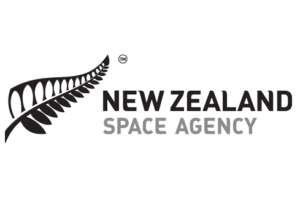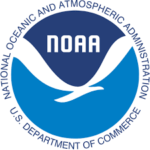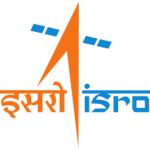When do I need a licence or permit?
You will need a licence or permit if you intend to conduct space activities in Australia, or from overseas as an Australian national.
The Space (Launches and Returns) Act 2018 (AUS) requires a licence or permit for the following space activities:
- Launch Facility Licence – required to operate a launch facility in Australia;
- Australian Launch Permit – required to launch a space object from Australia;
- Australian High Power Rocket Permit – required to launch a rocket that does not reach outer space but is considered a ‘high power rocket’;
- Overseas Payload Permit – required for Australian nationals to launch Australian payloads from overseas;
- Return Authorisation – required to return a space object to Australia, or to return an Australian space object outside of Australia; and
- Authorisation Certificate – required to authorise activities which are otherwise prohibited under the Act.
Why do I need a licence or permit?
It is a criminal offence under the Space (Launches and Returns) Act 2018 (AUS) to conduct space activities without a licence or permit.
- Offences against the Act will attract a penalty of up to 10 years imprisonment and/or a fine of up to AUD$1.15 million for an individual.
- In the case of a corporation, an offence will attract a fine of up to AUD$21 million.
There are liability consequences for operators who conduct space activities without holding the proper licences and permits.
- In the event of a claim for compensation, you will not benefit from the same limits to liability that would have applied if you held appropriate authorisation under the Act.
What licences or permits will I need?
The Space (Launches and Returns) Act 2018 (AUS) regulates – through issuing licences and permits – Australian launches and returns, launch facilities and high power rockets. The Act operates extraterritorially – it also applies to Australian nationals (including Australian entities) conducting space activities from other countries.
If you intend to operate a ‘launch facility‘ in Australia, you will need to hold a launch facility licence.
A ‘launch facility’ includes:
- Any fixed or mobile facility that is specifically designed or constructed to be capable of launching a space object.
- This also includes all other facilities necessary to conduct a launch, such as mission control facilities.
In addition to the launch facility licence, you may also need an Australian launch permit to conduct a launch from the launch facility that you own or operate. If the launch facility is provided by a third party, that third party is responsible for obtaining the necessary launch facility licence, but you will need to obtain the Australian launch permit.
If you intend to conduct a space launch from Australia, you will need to hold an Australian launch permit. This permit covers the ‘launch’ of a ‘space object’ from a fixed or mobile launch facility or from aircraft in flight in Australian airspace. A permit may also authorise the return of space objects.
A ‘space object’ includes:
- Any object or part that is intended to reach ‘outer space’, which, for the purposes of this legislation only, means, to reach an altitude higher than 100 kilometres above sea level.
- Note that the delimitation between airspace and outer space is a matter of international controversy, and you should not assume that the 100 kilometre limit applies in any other context.
A ‘launch’ includes:
- Any attempt to launch the object or any part of it into outer space.
Where appropriate, a single permit may be granted to authorise multiple space objects or a series of launches without needing a separate permit for each space object or launch.
If you intend to launch a rocket that does not reach outer space but is nonetheless a ‘high power rocket’, you will need an Australian high power rocket permit. This permit covers the launch of a high power rocket from a fixed or mobile launch facility or place in Australia.
A ‘high power rocket’ includes:
- Any rocket fitted with an active control system or propelled by motors with a combined impulse greater than 889,600 Newton seconds.
- You may also need to consider obtaining other licences or permits required by the Civil Aviation Safety Authority under aviation law.
You will need to hold an overseas payload permit if you are an Australian citizen, resident or entity who intends to conduct a space launch from outside Australia. This permit covers the launch of space objects from a fixed or mobile launch facility or place outside Australia.
You will need to hold a return authorisation if you intend to return a space object to Australia, or return an object to a place outside Australia. Where appropriate, a single return authorisation may be issued to cover a series of returns without needing a separate authorisation for each.
A ‘return’ includes:
- Any attempt to return a space object from an area beyond 100 kilometres above sea level.
An authorisation certificate is an approval to conduct an activity that would otherwise be prohibited under the Space (Launches and Returns) Act 2018 (AUS). The certificate covers any activity that is conducted without a licence or permit, such as operating a launch facility, or conducting a launch or return.
- This authorisation is intended to add flexibility and discretion to the licensing regime, allowing temporary exceptions for unforeseen technologies or circumstances that are not captured under the current regulatory framework.
IMPORTANT TO KNOW
An overseas payload permit only meets Australian requirements for launching a space object overseas. You will also need to hold the proper authorisations to launch from your host country.
USE CASE EXAMPLE
Angela wants to know what licences or permits she will need for her space operations.
Angela from ANGELS Aerospace is planning to launch a sounding rocket from New Zealand under a launch services agreement with Andromeda Space.
Angela has programmed the rocket to make its landing in a remote area in Western Australia. Angela is an Australian citizen and will be a responsible party for the launch in New Zealand.
- Overseas Payload Permit: As the responsible party for the launch, Angela will need to apply for an Overseas Payload Permit to launch her rocket from New Zealand as an Australian citizen.
- Return Authorisation: Angela will also need a Return Authorisation to authorise the return of her rocket to Western Australia.
- New Zealand Licenses and Permits: As the launch will be conducted under a launch services agreement, Andromeda Space will be responsible for holding the necessary NZ licences or permits to launch Angela’s rocket.
Link sources
Visit the Australian Space Agency’s website for more information on the 2019 Rules.
https://www.industry.gov.au/regulations-and-standards/space-regulation
Visit the Australian Space Agency’s website for more information on the proposed application fees under the 2018 Act.
https://consult.industry.gov.au/space/cost-recovery-implementation-statement/
Visit the Parliament of Australia’s website for more information on the background and purpose of the 2018 Act.
https://www.aph.gov.au/Parliamentary_Business/Bills_Legislation/bd/bd1819a/19bd015
How do I get a licence or permit?
How will my application be assessed?
The Space (Launches and Returns) Act 2018 (AUS) and its supporting Rules set criteria and application requirements that an applicant must satisfy before obtaining a licence or permit.
The supporting Rules consist of:
- Space (Launches and Returns) (General) Rules 2019 (AUS)
- Space (Launches and Returns) (High Power Rocket) Rules 2019 (AUS) – commencing on 30 June 2020
- Space (Launches and Returns) (Insurance) Rules 2019 (AUS)
The Australian Space Agency will not start assessing applications for high power rocket activity until 30 June 2020.
Requirements:
- You are technically competent to operate the launch facility;
- You have obtained all necessary environmental approvals under Australian law;
- You have an adequate environmental plan for the construction and operation of the launch facility;
- You have sufficient funding to construct and operate the launch facility;
- The risk of the launch facility causing substantial harm to public safety or damage to property is as low as is reasonably practicable;
- There are no reasons relevant to the international relations, or the national security or defence of Australia to deny a launch facility licence; and
- You meet any other criteria prescribed by the Space (Launches and Returns) (General) Rules 2019 (AUS).
Requirements:
- You are technically competent to conduct the launch and return;
- You meet the insurance/financial requirements for the launch and return;
- The risk of the launch and return causing substantial harm to public safety or damage to property is as low as is reasonably practicable;
- Unless otherwise approved by the Minister, the space objects concerned are not and do not contain a nuclear weapon, a weapon of mass destruction or a nuclear power source;
- There are no reasons relevant to the international relations, or the national security or defence of Australia to deny a launch permit; and
- You meet any other criteria prescribed by the Space (Launches and Returns) (General) Rules 2019 (AUS).
Additional Criteria:
- The launch vehicle is effective and safe as is reasonably practicable having regard to the purpose of the launch;
- The flight path is effective and safe as is reasonably practicable, having regard to the purpose of the launch, the design of the launch vehicle and the launch safety standards in the Flight Safety Code;
- The risk hazard analysis for each launch and any connected return is consistent with the Flight Safety Code; and
- There is adequate planning to address the environmental impacts of the launch or launches and any connected return.
Requirements:
- You are technically competent to conduct the launch;
- You meet the insurance/financial requirements for the launch;
- The risk of the launch and return causing substantial harm to public safety or damage to property is as low as is reasonably practicable;
- There are no reasons relevant to the international relations, or the national security or defence of Australia to deny a launch permit; and
- You meet any other criteria prescribed by the Space (Launches and Returns) (High Power Rocket) Rules 2019 (AUS).
Additional Criteria:
- The high power rocket is effective and safe as is reasonably practicable having regard to the purpose of the launch;
- The flight path is effective and safe as is reasonably practicable, having regard to the purpose of the launch, the design of the rocket and the launch safety standards in the Flight Safety Code;
- The risk hazard analysis for the launch is consistent with the Flight Safety Code; and
There is adequate planning that addresses the environmental impacts of the launch.
Requirements:
- You meet the insurance/financial requirements for the launch and return;
- The risk of the launch causing substantial harm to public safety or damage to property is as low as is reasonably practicable;
- Unless otherwise approved by the Minister, the space objects concerned are not and do not contain a nuclear weapon, a weapon of mass destruction or a nuclear power source; and
- There are no reasons relevant to the international relations, or the national security or defence of Australia to deny an overseas payload permit.
Requirements:
- You are technically competent to conduct the return;
- You meet the insurance/financial requirements for the launch and return;
- The risk of the return causing substantial harm to public safety or damage to property is as low as is reasonably practicable;
- Unless otherwise approved by the Minister, the space objects concerned are not and do not contain a nuclear weapon, a weapon of mass destruction or a nuclear power source;
- There are no reasons relevant to the international relations, or the national security or defence of Australia to deny a launch permit; and
You meet any other criteria prescribed by the Space (Launches and Returns) (General) Rules 2019 (AUS).
Additional Criteria:
- Each return is effective and safe as is reasonably practicable having regard to the purpose of the return, the design of the space object and the Flight Safety Code;
- The risk hazard analysis for each return is consistent with the Flight Safety Code; and
- You have the appropriate environmental approvals and environmental plans for conducting the return.
This additional criteria will not apply to payloads returning to a place or area outside Australia.
Under Rule 119 of the General Rules, the Minister must consider various factors in deciding whether to issue an authorisation certificate.
Considerations:
- Whether you are technically competent to conduct the activity concerned;
- Whether the Commonwealth is at risk of being exposed to liability for damage;
- Whether there is an unsatisfactory risk of liability to the Commonwealth if insurance is not held;
- Whether the risk of causing substantial harm to public safety or damage to property is as low as is reasonably practicable;
- Whether your activities involve a nuclear weapon or a weapon of mass destruction of any other kind;
- Whether there are reasons relevant to the international relations, or the national security or defence of Australia to deny an authorisation certificate; and
- Whether a permit or licence would be more appropriate to authorise the conduct.
How can I get started with a licence or permit?
If you are ready to start conducting space activities in Australia, or from overseas as an Australian national, you should follow these steps outlined below.
1. Read the Rules to understand what information is required as part of your application(s):
You should ensure that you have the necessary information and documentation required to process your application, such as environmental plans, debris mitigation strategies and other related plans.
- Information required for a launch facility licence application – Rules 11-25 of the General Rules
- Information required for an Australian launch permit application – Rules 43-60 of the General Rules
- Information required for an Australian high power rocket permit application – Rules 15-33 of the High Power Rocket Rules
- Information required for an overseas payload permit application – Rules 73-80 of the General Rules
- Information required for a return authorisation application – Rules 93-106 of the General Rules
2. Consider what other laws may impact your activities:
You should ensure that you hold all necessary approvals or authorisations under other Federal and State laws to conduct your activities (e.g. export control laws, environmental laws, spectrum licences, civil aviation law).
- Australian Communications and Media Authority
- Civil Aviation Safety Authority
- Commonwealth Department of the Environment
3. Contact The Australian Space Agency for guidance on your application
If you need to clarify aspects of your application, you can contact the Australian Space Agency by phone, email or post. You will also need to contact the Agency directly for application forms.
4. Assess your financial capacity to prepare and submit an application
It is essential you ensure that you have sufficient funding to prepare an application.
- Submitting an application is a cost-intensive exercise; both in terms of resources and fees. Having sufficient funding is often a pre-condition to obtaining most licences and permits.
How much does an application cost?
Currently, fees under the Space (Launches and Returns) Act 2018 (AUS) are still under consideration. The draft Cost Recovery Implementation Statement from the Australian Space Agency suggested an estimate of fees to assess applications. However, the Australian Space Agency is not currently charging fees for applications, pending a further round of consultations (see here under ‘Fees’). The Australian Space Agency will release the finalised fees and costings after further consultation and after a policy decision has been approved by the Government.
5. Prepare and submit your application
As far as possible, you should ensure that all information contained in your application is true, accurate, and complete.
- Updating information during the application process may cause unnecessary delay, although the Rules specifically allow for updates.
What happens if my application is rejected?
If your application for a licence or permit is rejected, you are entitled under the Act to seek external review of the decision by the Administrative Appeals Tribunal.
- If you are aggrieved by a particular decision, you should seek legal advice on your available options.
Comparing foreign licensing regimes
Key features:
- The New Zealand space licensing regime does not charge fees for an application, or for holding a licence or permit.
- New Zealand currently recognises licences from certain jurisdictions as meeting their licence or permit requirements.
- Australia and New Zealand offer equivalent space licences and permits.
Primary regulator:
The primary regulator of space activities in New Zealand is the NZ Space Agency.

Want to learn more about space law in New Zealand? Visit our article on New Zealand space law.
Key features
- The United States offers three different licences and permits: Launch/Re-entry Vehicles Specific Licence, Operator licence, Experimental Permits for Reusable Suborbital Rockets.
- The costs of launching activities in the United States depends on various factors, including: the launch vehicle used, size and destination of the payload and insurance requirements, among others.
- Licence holders are required to make a reciprocal waiver of claims with the relevant parties involved in launch or re-entry services under which each party agrees to be responsible for personal injury to, death of, or property damage or loss sustained by it or its own employees resulting from an activity carried out under the applicable licence.
- Space operators are subject to ongoing monitoring by the Federal Administration Authority to ensure compliance with licence conditions.
Government regulators:
The regulation of space activities in the United States is split between several federal government agencies:
- The Federal Aviation Administration (FAA)
- The Federal Communications Commission (FCC)
- The National Oceanographic and Atmospheric Administration (NOAA)
- The Department of Commerce




Want to learn more about space law in the United States? Visit our article on United States space law.
Key features
-
- The United Kingdom offers licences for three primary licence activities: Operator, Spaceport and Range Control.
-
- The granting of licences is controlled by the prescribed Regulator.
-
- Regulations, including insurance requirements, are still in the process of being drafted.
Primary regulator:
The primary regulator of space activities in the United Kingdom is the UK Space Agency.

Want to learn more about space law in the United Kingdom? Visit our article on United Kingdom space law.
Key features
- France separates ‘launch’ and ‘command’ phase, enabling ease in apportioning liability in the case of damage.
- France offers obtainable licences in addition to case-by-case authorisation, with lack of clarity surrounding costs.
- The French space licensing regime has clear insurance requirements and regulations regarding liability.
Primary regulator:
The primary regulator of space activities in France is Centre National d’Études Spatiales (CNES).

Want to learn more about space law in France? Visit our article on French space law.
Key features
- Launches are conducted through the Indian government, and there is an established commercial framework with government owned launch provider ‘Antrix’.
- Indian launch vehicles have flight heritage, having successfully launched hundreds of foreign space objects.
- There is a lack of legislation, leading to potential for discretion and uncertainty.
Primary regulator:
The primary regulator of space activities in India is the Indian Space Research Organisation.

Want to learn more about space law in India? Visit our article on Indian space law.
Key features
- Unlike other space-faring nations, China does not have comprehensive laws to regulate space activities.
- Licence holders are subject to continuing supervision and obligations under Chinese regulations.
- Insurance for space activities is compulsory under the Chinese regulatory regime.
Primary regulator:
The primary regulator of space activities in China is the State Administration for Science, Technology and Industry for National Defence (SASTIND).
Want to learn more about space law in China? Visit our article on Chinese space law.
Could I be liable if my space activities cause damage?
The Space (Launches and Returns) Act 2018 (AUS) imposes liability consequences on operators who cause damage to others in the course of their operations, or conduct space activities without holding the necessary authorisations or insurance coverage. Part 4 of the Act establishes rules and procedures to determine the liability of operators when damage to persons and property occurs.
You can learn more about your insurance obligations and the Australian space liability regime by accessing our article on liability and insurance.
What to do next
1. Enquire about insurance coverage for your operations
As a holder of a licence or permit, you will be required to hold a minimum amount of insurance.
You should contact an insurer to discuss your coverage.
2. Become familiar with your licence conditions
If you are granted a licence or permit, you will be required to comply with conditions prescribed by the Act, its supporting Rules and your licence or permit itself.
Standard conditions involve general compliance with provisions of the Act and reporting changes of circumstance to the Minister.
Important to know
Contravening a licence condition has serious implications under the Act:
- Breaches attract a penalty of $210,000 and could potentially result in your licence being revoked or suspended.
- In the event you cause damage as a result of a breach, your liability will not be limited.
Frequently Asked Questions
If you become aware of any changes to information that is relevant or required under your application, you must update your application and notify the Minister of the change.
The Space Activities (Launches and Returns) Act 2018 (AUS) does not set a statutory timeframe for processing applications.
The time it will take to process your application will depend on the licence or permit you are applying for and the completeness of the information you have provided.
It is recommended that you keep in close contact with the Australian Space Agency regarding updates on your application.
The Administrative Appeals Tribunal will conduct an external review.
An external review will examine the legality, procedure and merits of the original decision, and make a fresh decision in relation to your application.
The right to external review is not limited only to a decision to reject your application. It also applies to other adverse decisions under the Act, such as the suspension or revocation of a licence or permit.
WATCH THIS SPACE
In future iterations of the ANGELS website, this article may include information about environmental laws and dangerous goods legislation. If there are areas of law which would improve this article, feel free to leave feedback.